The morning after our visit to Taj Mahal, the breathtaking experience still fresh in our minds, we woke up early wondering how you follow up something like that.
We started the day with a taste of an authentic Indian breakfast: brown bread and hard-boiled eggs, curry and fry bread. The British influence showed as well with the ubiquitous beans and toast. And coffee. Sweet nectar of life at the early hour.
The rest of our group joined us at breakfast; a fellow Cascadian from Washington, two Aussies and a Canadian (sounds like Cascadian!) from Toronto. After breakfast, our now-complete group hopped aboard a bus toward Agra Fort.
Agra Fort is one of India’s many UNESCO World Heritage Sites, added to the list in 1983. Our local tour guide was excellent—a man in his 80s with encyclopedic knowledge of the fort’s long history. While the original structure dates to the 11th century, the Mughal Empire rebuilt the Fort over several years in the 1500s, turning it into a palatial castle. The Indian military still uses a portion of the fort for training.

I couldn’t help but have flashes of The Wall from Game of Thrones as we entered. The front of the castle, built from towering red sandstone, is fortified by layers of security. A drawbridge provides a crossing over the old moat, which was once full of hungry crocodiles. Once inside, the gate is protected by a “dry moat” of land between two walls. Openings along the top of the wall provided openings for crossbow fire or the pouring of hot oil or boiling water on enemies waiting at the gates.
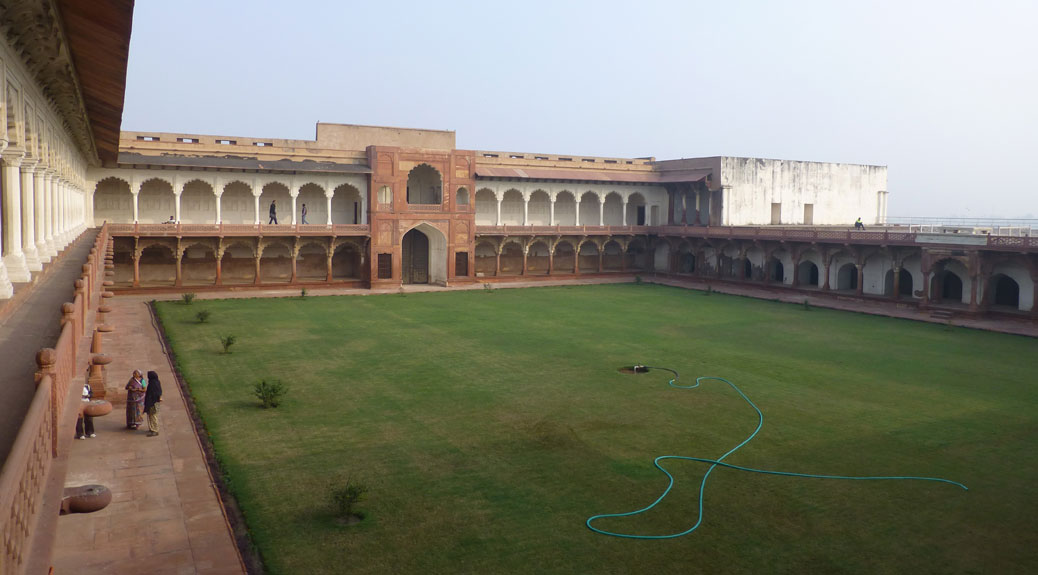
But if you’re lucky enough to be invited inside, paradise awaits. Imperial palaces open into living spaces that were once adorned with silk curtains, ornate carpets and beautiful marble carvings. It’s easy to imagine people living a life of comfort in these places.
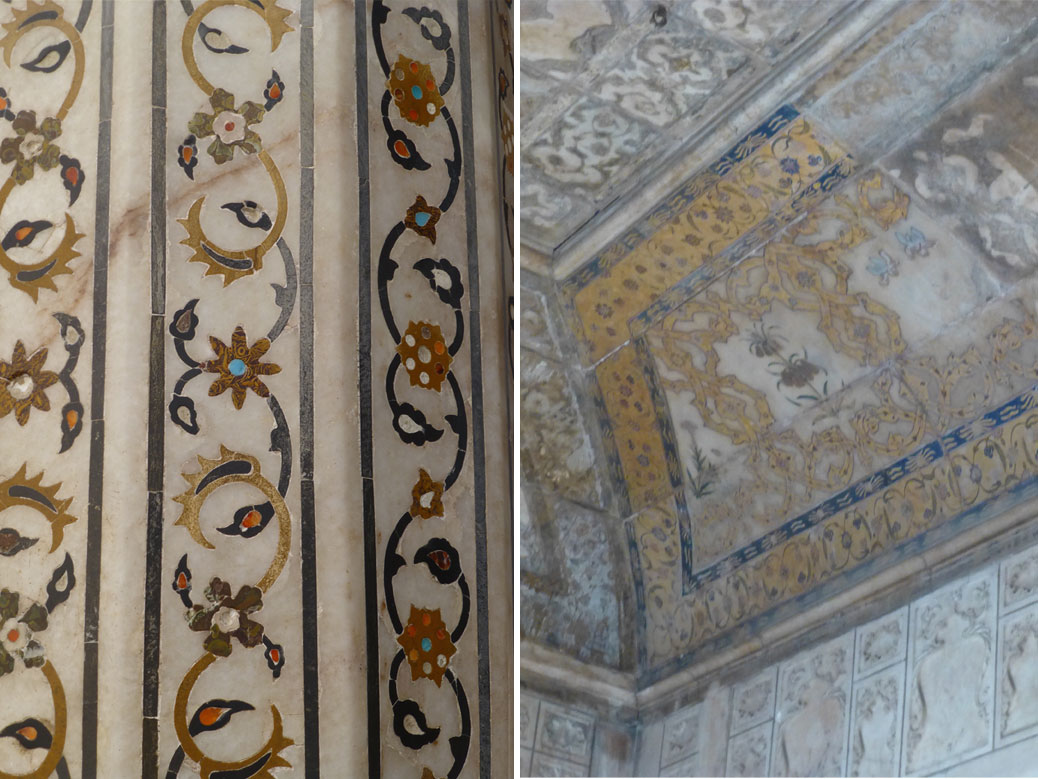
The gold leaf and paint has long since faded, but the inlay work remains as vibrant today as it was 400 years ago. Onyx, turquoise and other semi-precious stones are laid in intricate patterns in white Indian marble. Indian marble is more porous than Italian marble, so the light shines through, creating a translucence that brightens the space.
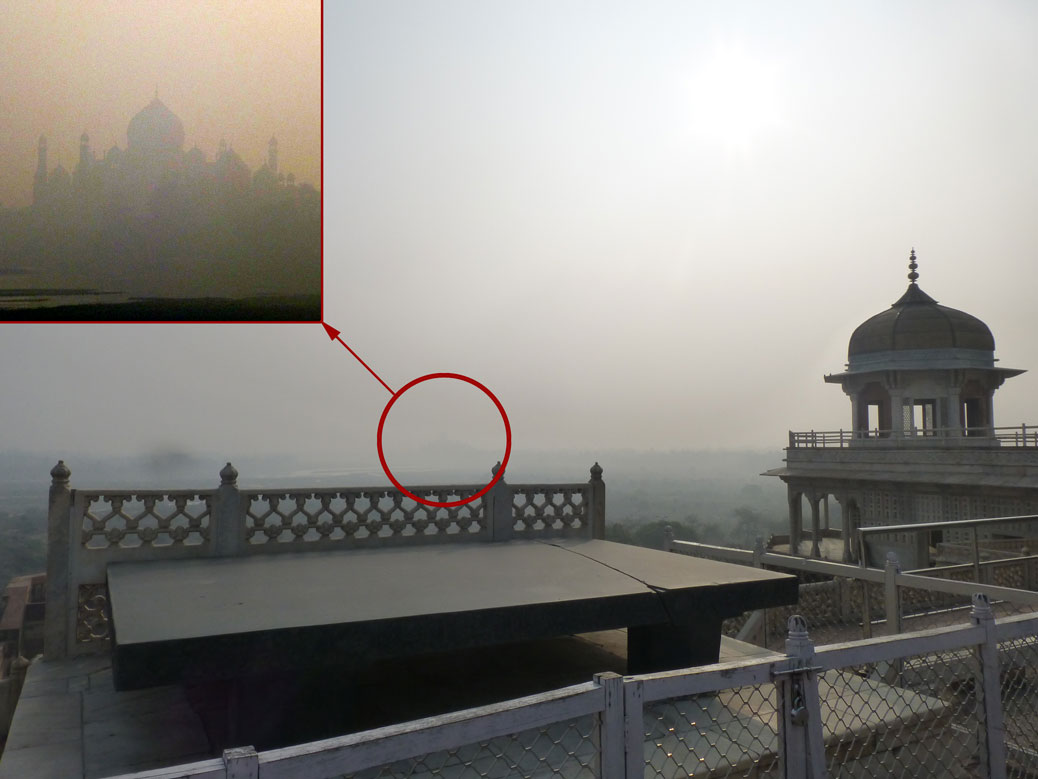
Atop the palace, the emperor’s throne platform sits in the middle of the public audience space. Taj Mahal fills the distant sky, although only a ethereal outline was visible in the morning haze.
Agra Fort and Religious Symbolism
In Muslim tradition, gardens complete every open space. Outside, the fort’s mosque shines a bright white, built with the leftover marble of Taj Mahal.

Religion plays a major role in the customs and behaviors of Indian society. India is the birthplace of Hinduism, the world’s oldest religion which helped spawn Buddhism and Jainism among others. But, while religion seems to create divisiveness in our modern world, it wasn’t always the case.
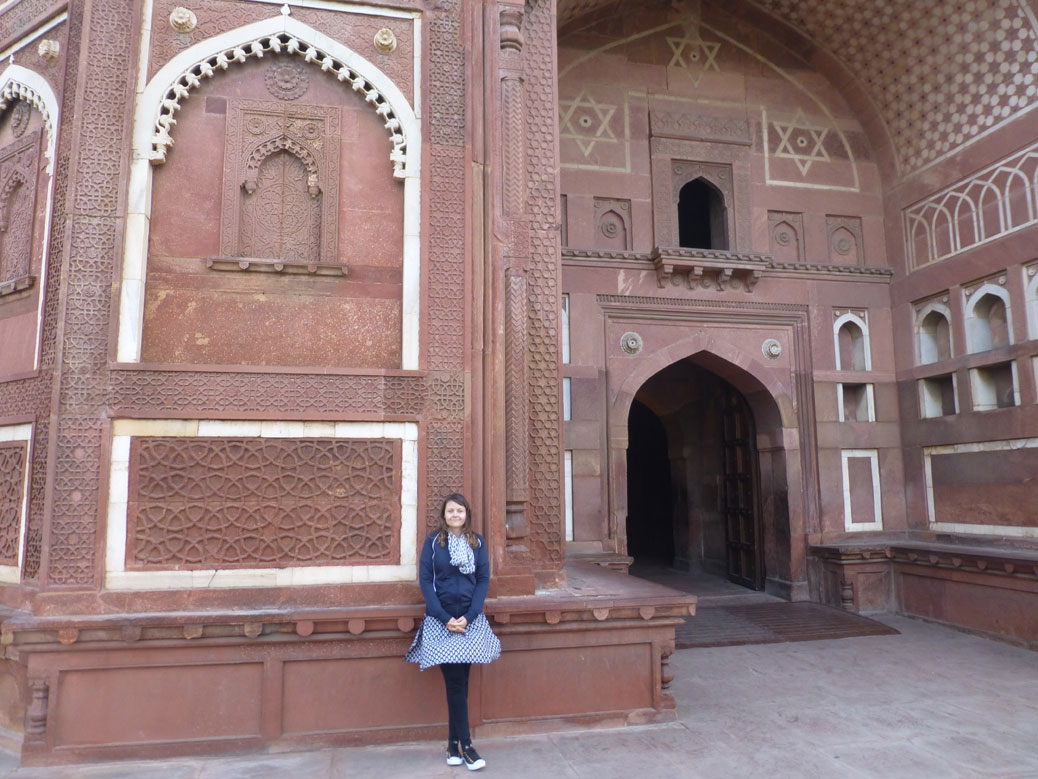
The reign of Akbar the Great during the late 1500s was a time of religious unity. Disillusioned by Islam, he created Dīn-i Ilāhī, bringing the best elements of all the major religions of the time together. As such, many of the buildings of the era are adorned with the symbols of Hinduism (swastika), Buddhism (lotus flower), Islam (arches), Judaism (Star of David) and Christianity (cross).

The swastika is prevalent throughout India, but not for the twisted meaning it holds in Western culture today. Originally, the swastika was the Hindu symbol of unity and peace. In artwork, it joins different symbols components together, creating an infinite flow. Unfortunately, it was given a different meaning in the 1930s when it was rotated 45 degrees and became a symbol of Germany’s Third Reich.
Agra Fort Fun Facts
- Agra Fort was originally built from bricks. The earliest recorded reference of the fort is from 1080 AD.
- Agra was the second capital of India (1556-1658) and Agra Fort served as the headquarters of Indian government.
- The walls of the fort are 70 feet tall or about seven stories.
- Agra Fort plays a key role in the Sherlock Holmes’ novel “The Sign of the Four.”
- More than 1.4 million workers participated in the “remodel” during the 1500s.

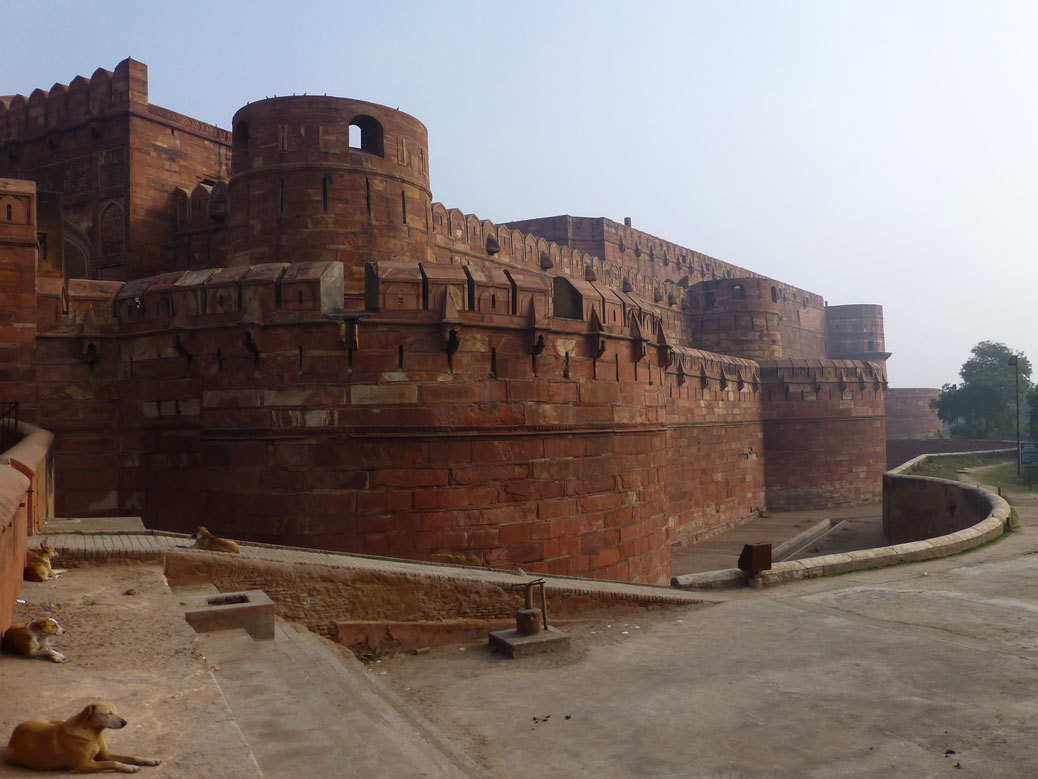
1 thought on “Behind the Walls of Agra Fort”